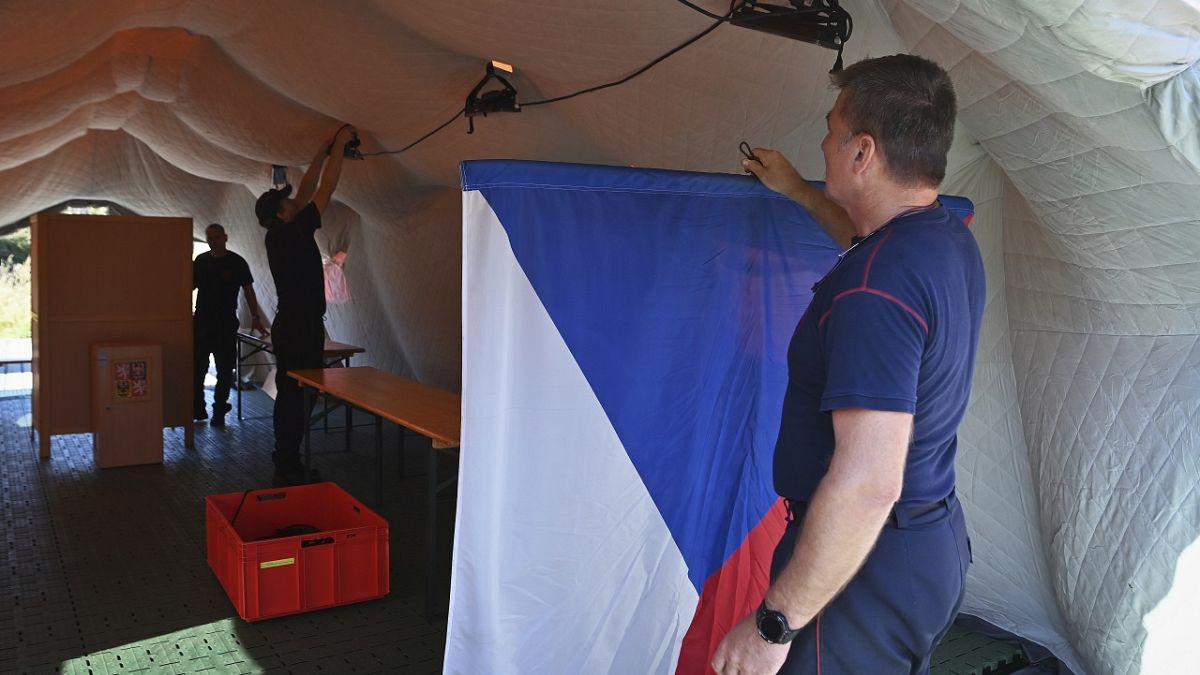By Gianna Ferrarin (October 1, 2024, 9:42 PM EDT) — A Louisiana federal court has issued a sweeping loss to Big Pharma’s top lobbying group and two pharmaceutical companies that argued a state law improperly expands the scope of the federal drug discount program….
Louisiana
Editorial: If we want to rebuild America, who will do it?

From the Mississippi River’s mouth below New Orleans all the way up to Baton Rouge, there’s a building boom going on.
That’s good for Louisiana and for America, as high-paying jobs in petrochemical manufacturing in particular are serving markets around the world.
Who’s going to build those facilities?
Louisiana’s got a large and sophisticated workforce in industrial construction. In the nine-parish Baton Rouge region, for example, the boom in construction work — led by petrochemical facilities costing hundreds of millions if not billions of dollars, taking years to build — created a record of more than 422,000 jobs, according to the Baton Rouge Area Chamber. Construction jobs posted a 4,800-job gain from March 2022 to March 2023, a 10.3% increase.
BRAC’s number-cruncher Andrew Fitzgerald points to a significant trend amid the good news: a “tight” labor market.
He reported that “while there were nearly 32,000 unique job postings in the region throughout March, fewer than 13,000 residents were out of a job and looking for one, meaning there were about 2.5 open jobs for each person looking.”
Louisiana’s labor force participation rate is lower than the national average, as experts reported in a recent presentation for the Louisiana Association of Business and Industry.
And there is growing concern nationally about labor force gaps, not just in our important petrochemical sector. The rate of people participating in the workforce has risen since the coronavirus pandemic, naturally, but it’s still below the pre-pandemic level of 63.3%, reports Joseph Kane of The Brookings Institution.
Underlying those global numbers is a specific challenge for construction.
Kane noted the events of the last couple of years, such as the giant new infrastructure law and major new federal subsidies aimed at building science and technology projects, including chip-making plants, in America.
“Difficulties in hiring, training, and retaining a younger, more diverse workforce limit economic opportunity, slow down projects, and pose the very real possibility of mission failure for infrastructure employers, including the owners and operators of these systems,” Kane said of the nation.
And as he pointed out, that’s not just in the industrial construction sector we’re used to in Louisiana. Electricians and other workers are going to be vital to achieving big changes, like building charging stations for electric cars nationwide. We need more of them in Louisiana.
State government is also all-in on expanding broadband internet access, as it should be, and that too requires more skilled workers.
Kane’s analysis of the overall workforce obstacles facing this country is particularly relevant to Louisiana: Demographic realities mean that more women of color, in particular, will be needed in well-paying professions that might have not been so welcoming in the past — such as construction. That’s a great opportunity for Louisiana’s people, but also a major challenge.
“Time is fleeting, and the federal money is already flowing,” Kane wrote. “The path of least resistance — relying on the same types of workers, hiring and training strategies, and more — will not only fail to curb the outflow of talent across the infrastructure sector, but also fail to truly expand the talent pool and maximize the current window of federal funding.”
In Louisiana, we’re doing many positive things in, for example, technical and community colleges focused on workforce preparation.
Will that be enough? We hope so, because the benefits of growth go to regions that have the educated and trained workforce to get the big jobs done.

Louisiana
East Texas volunteers respond to Louisiana flooding

MORGAN CITY, La.—“Stop,” urged Chaplain Leslie Burch of the Texans on Mission Deep East Texas flood recovery team. “Can everybody stop and pray with me?”
She asked her fellow team members to halt their work as they tore out flooring in the home of Troy and Angel in Morgan City, La.

The couple’s home had been flooded during heavy rains that hit the Mississippi Delta town the week before as Hurricane Francine landed in southern Louisiana.
“Troy and Angel are talking about accepting Christ, and we need to pray for God’s Spirit,” Burch explained.
It was all she needed to say. The group left their scrapers, shovels and wheelbarrows, gathered in the living room, now an empty space with bare concrete floors, held hands and prayed for the young homeowners and their children.

The Texans on Mission team was one of two that responded to Francine’s aftermath, joining partner groups from several other states to provide flood recovery and tree and debris removal after the violent storm.
Like many Texans on Mission teams, the Francine volunteers represented a mix of churches and backgrounds from throughout southeastern Texas.
Burch, a member of First Baptist Church of Orange, said the team came to “serve the needs” of the flood victims.
Team leader Mike Petigo of First Baptist Church in Nederland explained the team had been assigned to do flood recovery.
Sign up for our weekly edition and get all our headlines in your inbox on Thursdays
“We’re taking out sheetrock and disinfecting their homes so that survivors can get ready to put new sheetrock back in,” Petigo said.
For Steve Hammer of Covenant Church in Willis, the recovery efforts were about “getting it all cleaned out so these people can get on with their lives.
“We’re here today, about a week after the hurricane came through, and it’s important,” Hammer added. “We’re cleaning out houses now, because it gets nastier and nastier and nastier as time goes on.”
Pastor on the receiving end of ministry
Homeowners Tracey and Marci Smith were grateful for the team, who removed the lower two feet of their home’s sheetrock to ready it for replacement after flood waters seeped in and posed a mold danger.
It was especially meaningful for Tracey Smith, pastor of First Baptist Church of Morgan City, where the combined relief teams camped in Bible study rooms and ate in the fellowship hall.

Smith has been involved in Louisiana Baptist disaster relief in previous hurricane recoveries, but after Francine flooded his home, he found himself on the receiving end of disaster response.
Taking a break from helping the Texas team tear out lower walls and treat for mold, he offered his perspective on the recent storm.
“Well, we’ve been through this before. We’ve been through Hurricanes Laura and Delta back in 2020. But we didn’t have flooding like this,” Smith said.
Smith rode out the flooding in his truck outside his home. Marci Smith said that as the water rose and came closer to their house, Tracey “sat in the truck with the two dogs” near his fishing boat in case he needed to “help our neighbors escape.” It was not needed, but he was ready to help.

The Smiths’ own home became surrounded by an unbroken sea of water.
“It’s just kind of a hopeless feeling not being able to stop or prevent that from happening,” Tracey said.
The day after the storm, he said, the couple noticed the water “was migrating more and more throughout the house.
“So, we didn’t know to what degree we were going to have to remove the flooring or walls or anything like that,” he said. “It pretty much changes your routine and most definitely changes your way of life. You know that it’s not going to be back to what you would consider normal anytime soon.”
Tracey Smith has responded to other disasters, including Hurricane Ian in 2022 when he worked with Texas volunteers. So, he knew what to expect from the volunteers when they arrived.
“We knew the quality job” they would do, Tracey said. “We knew that they were going to be more than willing to do whatever we needed. And we were just glad to have them. … This is a good bunch.”
Louisiana
Judge Backs Louisiana 340B Law In Loss For Pharma Lobby – Law360

Law360 is on it, so you are, too.
A Law360 subscription puts you at the center of fast-moving legal issues, trends and developments so you can act with speed and confidence. Over 200 articles are published daily across more than 60 topics, industries, practice areas and jurisdictions.
A Law360 subscription includes features such as
- Daily newsletters
- Expert analysis
- Mobile app
- Advanced search
- Judge information
- Real-time alerts
- 450K+ searchable archived articles
And more!
Experience Law360 today with a free 7-day trial.
Louisiana
Louisiana governor supports bringing back tradition of having a live tiger at LSU football games

Gov. Jeff Landry confirmed his support on Tuesday of restarting the tradition of bringing Louisiana State University’s live tiger mascot onto the football field ahead of home games.
It has been nearly a decade since a Bengal Tiger has been rolled out in a cage under the lights of Death Valley, LSU’s famed Tiger Stadium in Baton Rouge where the school’s football team plays. University officials have not publicly said whether they are willing to revive the tradition, but that didn’t stop Landry from sharing his own opinion when asked by reporters.
“I think the opportunity to bring our mascot back onto that field is an unbelievable opportunity,” Landry said during an unrelated news conference on Tuesday.
People for the Ethical Treatment of Animals has vehemently objected to the idea. In early September, the organization sent a letter to Landry urging against the tradition, describing it as cruel and dangerous to the mascot’s welfare and adding that tigers are “naturally solitary animals who don’t belong in rowdy football stadiums.”
“Going back to the bad old days of using a wild animal as a sideline sideshow in 2024 is the last thing LSU should do, and PETA is appealing to Gov. Landry to drop this boneheaded idea,” the letter read.
On Tuesday, Landry said that “everybody that has some anxiety over this needs to calm down.”
The Associated Press emailed a spokesperson for LSU, the athletics department and the university’s School of Veterinary Medicine for a comment, but it did not receive an immediate response.
For years, the school’s live mascot would ride through the stadium in a travel trailer “topped by the LSU cheerleaders” before home games, based on information about the mascot on the LSU Athletics’ webpage. Before entering the stadium, the cage, with the tiger nicknamed Mike in it, would be parked next to the opponent’s locker room — forcing the visiting team to pass it.
Some of the live mascots even traveled with the team — brought to area games, the 1985 Sugar Bowl and the Superdome in New Orleans in 1991.
Following the death of the school’s tiger, Mike VI, in 2016, LSU announced that future Mike the Tigers would no longer be brought onto the field. According to the school’s website, Mike VI, who died from a rare form of cancer, had attended 33 of 58 home between 2007 and 2015.
While the university’s current live mascot, Mike VII — an 8-year-old and 345-pound tiger that was donated to the school from a sanctuary in 2017 — is not brought onto the field for games, visitors can still see the tiger in his 15,000-square-foot enclosure, which is on the campus and next to the stadium.
In the past, animal rights groups have called on LSU to stop keeping live tiger mascots. The school says it is providing a home to a tiger that needs one while also working to educate people about “irresponsible breeding and the plight of tigers kept illegally and/or inappropriately in captivity in the U.S.,” according to the athletics’ website.
Louisiana is not the only school that is home to a live mascot. Other examples include Yale University’s Handsome Dan, a bulldog; University of Texas at Austin’s Bevo the Longhorn, who appears on the field before football games; and University of Colorado’s Ralphie the Buffalo, who runs across the field with its handlers before kickoff.
-

 News1 week ago
News1 week agoCross-Tabs: September 2024 Times/Siena Polls in Arizona, Georgia and North Carolina
-

 World1 week ago
World1 week agoCzech main opposition party dominates regional elections
-

 News1 week ago
News1 week agoElection 2024 Polls: Texas
-

 Culture1 week ago
Culture1 week agoMichigan proved it can win ugly against USC. That’s all that matters — for now
-

 Politics1 week ago
Politics1 week agoAndrew Cuomo slams 'defund the police' movement in fiery church speech: 'Dumbest words ever uttered'
-

 Politics1 week ago
Politics1 week agoElon Musk’s pro-Trump super PAC launches website to increase canvassers in battleground states
-

 Sports1 week ago
Sports1 week agoPayet, Bolasie and Depay — why are so many random European players heading to Brazil?
-

 Movie Reviews1 week ago
Movie Reviews1 week agoCharles Band’s ‘DEATH STREAMER’ (2024) – Movie Review – PopHorror





















